. . . or “I See Dead People and Should Maybe Not Have So Much Tequila”
It’s Day 12 here at Speculative Chic for the Kasturi/Files as we wend our way through the burnt-leaf October days of this horror movie extravaganza of chitchat, film discussion, book recs, and cocktail recipes from Sandra Kasturi and Gemma Files!
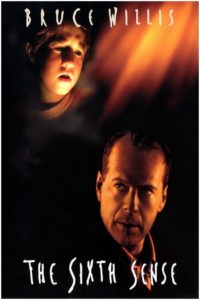 Sandra: Yep, it’s time for The Sixth Sense (1999, directed by M. Night Shyamalan). I know, I know, it’s almost a cliché. Couldn’t we cover something more unusual? More obscure? I promise you, those movies are coming up. So, let’s be sensible and give credit where credit is due, to a movie that had a profound impact on audiences worldwide. And: SPOILER ALERT BUT YOU SHOULDN’T NEED ONE!
Sandra: Yep, it’s time for The Sixth Sense (1999, directed by M. Night Shyamalan). I know, I know, it’s almost a cliché. Couldn’t we cover something more unusual? More obscure? I promise you, those movies are coming up. So, let’s be sensible and give credit where credit is due, to a movie that had a profound impact on audiences worldwide. And: SPOILER ALERT BUT YOU SHOULDN’T NEED ONE!
One of the reasons I wanted to talk about The Sixth Sense is that it was a seminal film that influenced a host of other movies, created a barrage of knock-offs, derivatives and satires, but is still, in and of itself, a pretty damn great movie.
Gemma: This is a problem often encountered when re-viewing highly influential older films, or — most especially — when viewing them for the first time from the POV of someone who’s lived their whole life in that film’s post-cultural moment. I used to call it “Godfather Syndrome,” back when I was still teaching Film History 101: I’d do something like show part of Francis Ford Coppola’s The Godfather in class and point out the ways in which it broke the established gangster film mold back when it was made, only to have my students complain that it just looked like Coppola was “ripping off” whatever their current favorite gangster film happened to be, from Goodfellas to Carlito’s Way to Empire (with John Leguizamo, rather than Terence Howard and Taraji P. Henson). In other words, when someone consolidates a bunch of “new” tricks only to have everyone else immediately pick them up and run with them, what seemed super-fresh when they did it starts to looked played out as hell pretty damn fast. Which is why it sometimes times takes a few more decades before you can even begin to look at the original objectively again.
Sandra: To very quickly recap the basic plot, therefore: Malcolm Crowe (Bruce Willis) is a child psychologist in Philadelphia living with his wife Anna (Olivia Williams). One night a deranged former patient shoots him and then himself. The movie jumps ahead a year. Malcolm has recovered and begins working with Cole Sear (Haley Joel Osment), a troubled young boy. Malcolm is also estranged from his wife, whom he can’t seem to communicate with, but is trying to put his marriage back together again. Cole doesn’t want to tell Malcolm what exactly is wrong, but eventually confesses, in one of the most famous lines in movie history: “I see dead people.” Malcolm ends up thinking that maybe there’s a reason for Cole’s gift — that he should try to help the dead people who come to him, instead of being afraid of them. In the meantime, Cole is also having problems with his mother, Lynn (the amazing Toni Collette); he can’t talk to her about his supernatural experiences, and despite her fierce love for him, she has grown impatient with what she sees as his bad behavior. Malcolm continues to try to talk to Anna about their problems, but she won’t tell him what’s really bothering her. 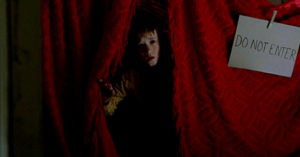 Eventually, Cole helps several dead people (including solving a crime of a mother killing her daughter — played by a young Mischa Barton — via Munchausen’s by Proxy), and reconciles with his gift. As Malcolm tries to put his marriage together one last time, Anna drops Malcolm’s wedding ring; he looks down and realizes that his gunshot wound is still there — Malcolm didn’t recover after all — he’s been dead this whole time. He’s just another ghost that Cole has tried to help. Once Malcolm realizes this, he tells his wife he loves her and is able to move on.
Eventually, Cole helps several dead people (including solving a crime of a mother killing her daughter — played by a young Mischa Barton — via Munchausen’s by Proxy), and reconciles with his gift. As Malcolm tries to put his marriage together one last time, Anna drops Malcolm’s wedding ring; he looks down and realizes that his gunshot wound is still there — Malcolm didn’t recover after all — he’s been dead this whole time. He’s just another ghost that Cole has tried to help. Once Malcolm realizes this, he tells his wife he loves her and is able to move on.
I admit that I am one of the (supposedly few) people who didn’t see the ending coming. I was completely surprised and astonished by the revelation that Bruce Willis had been dead all along. But what I found even more surprising was that, once you know the secret of the movie, it becomes even more fascinating to watch, because you interpret every scene differently, based on this new knowledge. I think one of my favorite moments is when Malcolm meets Anna on their anniversary at “their” restaurant. He’s late and apologetic; she’s clearly been there for hours and is super pissed. She won’t even talk to him. She pays for her drink and leaves in a huff. At least — that’s what it looks like. And you end up thinking, “Geez, he was busy helping someone and he’s really sorry! Don’t be such a bitch!” But in fact, what’s happening is that she’s there on their anniversary alone, remembering him, and is heartbroken and miserable because she misses him so much. It’s such a beautifully orchestrated scene with two completely different scenarios happening simultaneously — genius!
Gemma: I’ve said it before and I’ll say it again — one of my very favorite things about Shyamalan is his attention to emotional detail, especially when it comes to showing the mechanics of grief, how personal trauma can both elevate and deform us. When we’re grieving, we open up in some ways and close down in others; we become simultaneously hyper- and hyposensitive, like a rucked layer of scar over an open wound. The awfulness of grief lies in the way we can re-experience it over and over, yet never see it coming. Nothing heals, until it does. And while he does it equally well in The Village and Signs — the latter where Mel Gibson’s inability to be as kind as his vocation and instincts tell him to be, show us just how raw and immediate his grief is, the former where William Hurt’s constant gentleness and vague distraction show us just how long he’s been living with the knowledge that he made mistakes which have only further complicated the lives of people (those he only wanted to sacrifice anything he could for, in order to insulate them from unhappiness) — The Sixth Sense spins on Shyamalan’s ability to show us that a ghost is always caught in some terrible moment of loss, unable to move on until it communicates and processes its own fear, rage and pain by making someone else feel not just those emotions, but also feel for them. Cole can’t grow beyond the state of constant fear he lives in when Malcolm first meets him until he empathizes with the ghosts who scare him so much; that’s the movie’s real narrative, so when “his” ghosts become friends rather than persecutors, it shifts genres in a way that allows Malcolm to move on too. It becomes a story about people helping each other rather than hurting each other, and the fact that one of those people is alive while others are dead? Almost doesn’t matter anymore.
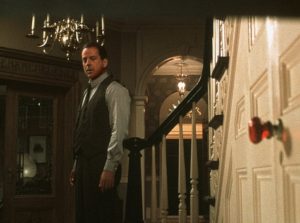 Sandra: Cinematographically speaking, there are also all the beautiful touches of red in the film . . . symbolism we almost overlook, even though it becomes obvious in hindsight how calculated Shyamalan’s use of it is. Much of the movie looks dark and gritty: Philadelphia (the most haunted city in America!) looking kind of dirty — gloomy sky, spooky things in the shadows. But there are these bright flashes of red — and each one signifies something touched by the supernatural, by the otherworld. Osment’s red sweater, clawed by ghosts. That red glass doorknob that Willis keeps rattling, trying to get into the basement. Each little touch of brilliant color a signpost to what’s going on.
Sandra: Cinematographically speaking, there are also all the beautiful touches of red in the film . . . symbolism we almost overlook, even though it becomes obvious in hindsight how calculated Shyamalan’s use of it is. Much of the movie looks dark and gritty: Philadelphia (the most haunted city in America!) looking kind of dirty — gloomy sky, spooky things in the shadows. But there are these bright flashes of red — and each one signifies something touched by the supernatural, by the otherworld. Osment’s red sweater, clawed by ghosts. That red glass doorknob that Willis keeps rattling, trying to get into the basement. Each little touch of brilliant color a signpost to what’s going on.
Every time I watch The Sixth Sense, I am amazed all over again at how Shyamalan put the movie together. But it’s not just an exercise in intellectual cleverness — there’s a real heart to the whole thing, most of which is centered around Haley Joel Osment’s performance. So many child actors fall into that overly saccharine cuteness, that deliberate emotional manipulation of the audience, and he never falls into that trap. Sure, he’s adorable at that age, but the character’s earnest anxiety, his isolation, and his innate goodness shine through. It’s a great role and a great performance. Bruce Willis is wonderful too — none of his usual smirkiness and cocky attitude appear. Toni Collette as Cole’s mother lives in the role. You’d never know she was Australian! My favorite moment with her and Osment occurs almost at the end of the movie — they’re stuck in a traffic jam, and Cole knows that it’s because a cyclist has been killed up ahead. How? Well, of course, the dead woman came up to his car window to talk to him. And Cole decides to confess to his mother there and then about his abilities. He asks her about her bumblebee pendant, and how she always thinks Cole is the one moving it. He tells her it’s not — that it’s her mother, his grandma. She misses her daughter, and that was her favorite pendant. And finally, Cole’s mom believes him, and they are both in tears. It’s a beautiful moment, and you can almost see the fierce love they have for each other, and that finally, understanding has come.
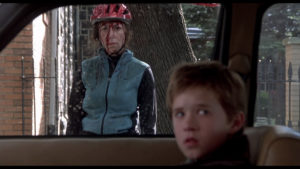
I know that now it’s become fashionable to hate Shyamalan, and yeah, okay, maybe all of his movies weren’t 100% great, and yeah, maybe everyone jokes “What a tweeeeest!” about the endings of his films (as Gemma said yesterday). But I loved Unbreakable, and I liked Signs (though I thought the ending was hokey). I liked The Village despite the fact that on that one I figured out the ending in advance. But damn if it wasn’t still thrilling! I thought Stuart Little was great! (He wrote that one.) I even liked a lot of Lady in the Water! Okay, I confess I thought The Happening was silly, but even that had a great opening and wonderful moments as it went on.
Gemma: I have an early copy of The Happening’s script, and I swear to God, that one died on arrival due to bad casting choices — the awful chemical reaction of Mark Wahlberg and Zooey Deschanel’s equally breathless-high, whiny voices. You don’t believe they ever loved each other, or that either of them is capable of figuring things out on the fly, and that kills the whole fucking film stone dead. On page, it works. Peter Weir would have known what to do with it; Shyamalan seems like maybe he second-guessed himself. That’s my theory and I’m sticking to it.
Sandra: But to continue — I liked Glass, and thought Split was fantastic. And if you haven’t seen his weird little psychological horror movie from Blumhouse, The Visit, you should. That’s a way better track record than some other more “prestigious” writer-directors I could name.
Gemma: PS, you know what else is worth your time, that you just might have overlooked? Devil, directed by John Erick Dowdle from a screenplay by Brian Nelson, from an M. Night story. It was supposed to be part of a series called “The Night Chronicles,” and I would really like to see the rest of those ideas brought to fruition. (Yes, motherfuckers, it does involve the actual Devil, if that stops you — but more like the Twilight Zone episode “The Screaming Man” than The Exorcist. That’s right, I compared Shyamalamadingdong to Rod Serling! Die mad about it. ;))
Sandra: Devil! Yes! I know it gets poor ratings, but I really liked that one. So full of creep and set in the quintessential locked room: the stalled elevator. To sum up: You may think Shyamalan’s a sell-out, or his movies have declining impact, or that he’ll never have the effect again that he did with The Sixth Sense. But you know . . . each movie Shyamalan makes has an emotional core to it that remains relevant even as time goes on. Because, ultimately, his films are about family, and about human connection, and the way we see and interact with the world outside (and inside) us. And that, frankly, will always matter.
Cocktail: Liquefied Ghost Cocktail
Sandra: From Janelle Maiocco, this delightful little concoction is described as a “grown-up version of a milkshake with a kick.” And, unlike some of these recipes I’ve been throwing at you, this one doesn’t have a ton of ingredients and is pretty easy to make.
 Ingredients:
Ingredients:
- 2 oz. vodka
- 1 oz. vanilla simple syrup
- 1 oz. cream
- 2 oz. soda
Mix vanilla simple syrup, cream, vodka and soda together in a cocktail shaker, then serve in a chilled martini glass.
**Note: if you don’t have simple syrup, it’s actually super easy to make. 1 cup of sugar, 1 cup of water, and you boil it. Boom, done. I mean if you want an actual recipe, here’s one. https://www.allrecipes.com/recipe/20216/simple-syrup/ For the vanilla version, just add a tablespoon of vanilla extract.
Book Recommendations
Sandra: I must recommend David Nickle’s The ’Geisters or as we fondly call it sometimes, “Men Who Stare at Ghosts.” It is probably one of the . . . most peculiar ghost stories I’ve ever read, in that it’s about people who, um, really like poltergeists. A lot. Like, a whole lot. Dave told me that what he wanted to do was to write a book about people’s strange erotic proclivities, without ever making it erotic at all. Achievement unlocked! The book is also quite dark and disturbing, especially when you get to the end and Certain Things Are Revealed.
And possibly one of the mind-fuckiest books ever: Jonathan Carroll’s Voice of Our Shadow, which is another great one for reversal right near the end, and a profoundly cruel kind of reversal too. But so gorgeously written. Carroll is, in general, another writer you should check out. All of his books are amazing and deeply weird.
Gemma: For my own recs, I’ll point people in the direction of Sarah Waters’s The Little Stranger, an apparent haunted house novel of amazing emotional impact which turns out to be less about one sort of ghost than another sort, equally creepy, equally dreadful. I’d also like more people to read Scott Thomas’s Kill Creek, in which four different types of successful horror authors are invited to stay inside a legendarily haunted house by an Internet mogul who plans to stream their shared reactions live; I think Shyamalan could totally do this one justice, especially as a ten-episode Netflix series in the Mike Flanagan Haunting of Hill House vein. (My favorite non-horror part? When the Kathe Koja/female Edward Lee character and the Stephen King/Robert R. McCammon character haphazardly bond over improvising book pitches in each other’s voices, to hilarious effect. Check check it.)
 Sandra Kasturi is the publisher of ChiZine Publications, winner of the World Fantasy, British Fantasy, and HWA Specialty Press Awards. She is the co-founder of the Toronto SpecFic Colloquium and the Executive Director of the Chiaroscuro Reading Series, and a frequent guest speaker, workshop leader, and panelist at genre conventions. Sandra is also an award-winning poet and writer, with work appearing in various venues, including Amazing Stories, Black Feathers: Dark Avian Tales, Prairie Fire, several Tesseracts anthologies, Evolve, Chilling Tales, ARC Magazine, Taddle Creek, Abyss & Apex, Stamps, Vamps & Tramps, and 80! Memories & Reflections on Ursula K. Le Guin. She recently won the Sunburst Award for her short story, “The Beautiful Gears of Dying,” in the anthology The Sum of Us. Her two poetry collections are: The Animal Bridegroom (with an introduction by Neil Gaiman) and Come Late to the Love of Birds. Sandra is currently working on another poetry collection, Snake Handling for Beginners, a story collection, Mrs. Kong & Other Monsters, and a novel, Wrongness: A False Memoir. She is fond of red lipstick, gin & tonics, and Idris Elba.
Sandra Kasturi is the publisher of ChiZine Publications, winner of the World Fantasy, British Fantasy, and HWA Specialty Press Awards. She is the co-founder of the Toronto SpecFic Colloquium and the Executive Director of the Chiaroscuro Reading Series, and a frequent guest speaker, workshop leader, and panelist at genre conventions. Sandra is also an award-winning poet and writer, with work appearing in various venues, including Amazing Stories, Black Feathers: Dark Avian Tales, Prairie Fire, several Tesseracts anthologies, Evolve, Chilling Tales, ARC Magazine, Taddle Creek, Abyss & Apex, Stamps, Vamps & Tramps, and 80! Memories & Reflections on Ursula K. Le Guin. She recently won the Sunburst Award for her short story, “The Beautiful Gears of Dying,” in the anthology The Sum of Us. Her two poetry collections are: The Animal Bridegroom (with an introduction by Neil Gaiman) and Come Late to the Love of Birds. Sandra is currently working on another poetry collection, Snake Handling for Beginners, a story collection, Mrs. Kong & Other Monsters, and a novel, Wrongness: A False Memoir. She is fond of red lipstick, gin & tonics, and Idris Elba.
 Formerly a film critic, journalist, screenwriter and teacher, Gemma Files has been an award-winning horror author since 1999. She has published two collections of short work, two chap-books of speculative poetry, a Weird Western trilogy, a story-cycle and a stand-alone novel (Experimental Film, which won the 2016 Shirley Jackson Award for Best Novel and the 2016 Sunburst award for Best Adult Novel). Most are available from ChiZine Publications. She has two new story collections from Trepidatio (Spectral Evidence and Drawn Up From Deep Places), one upcoming from Cemetery Dance (Dark Is Better), and a new poetry collection from Aqueduct Press (Invocabulary).
Formerly a film critic, journalist, screenwriter and teacher, Gemma Files has been an award-winning horror author since 1999. She has published two collections of short work, two chap-books of speculative poetry, a Weird Western trilogy, a story-cycle and a stand-alone novel (Experimental Film, which won the 2016 Shirley Jackson Award for Best Novel and the 2016 Sunburst award for Best Adult Novel). Most are available from ChiZine Publications. She has two new story collections from Trepidatio (Spectral Evidence and Drawn Up From Deep Places), one upcoming from Cemetery Dance (Dark Is Better), and a new poetry collection from Aqueduct Press (Invocabulary).

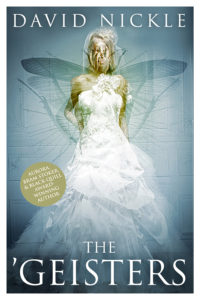
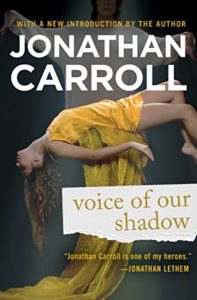
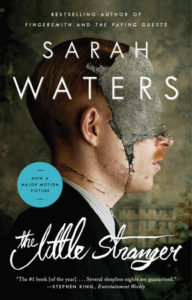
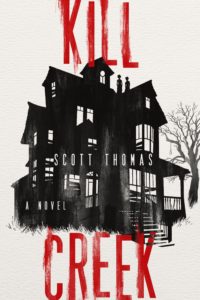
It’s been a long while since I’ve seen this, but it is so, so good. I disagree that people saw the ending coming….. when this came out, no one knew to expect the twist: it was genuinely shocking upon first viewing, because we hadn’t been trained yet to look for it. Yes, in later movies, Shyamalan had trained us there was ALWAYS A TWIST, to the point that my husband predicted the twist of The Village from just watching the trailers, but for someone to say they saw the twist coming for The Sixth Sense before the movie became such an icon? I call b.s.
Anyway, Shyamalan’s movies definitely have their ups and downs. You’re right about The Visit and Devil, and the Unbreakable trilogy (WE FINALLY HAVE A TRILOGY) is really powerful. I definitely feel I need to rewatch some of his less impressive works, now that the hype is gone and I no longer “need” Shyamalan to keep topping himself: it’d be nice to enjoy those movies on their own merits.
That said, you hit the nail on the head: horror with real emotional heft. If I can accomplish that in my own fiction, I’d be happy.
I enjoyed this movie a lot, though I will quibble with Shara. I did see the twist coming. But anticipating the reveal was still enormously satisfying. And it’s not one of those twists that ruins a rewatch. I saw the movie with a friend though who had already seen it and I wouldn’t be surprised if his body language telegraphed the twist somehow.
Now that’s fair! But I know a lot of people claiming they saw the twist coming when I know for a fact they’re just posturing, if that makes sense?
But I know a lot of people claiming they saw the twist coming when I know for a fact they’re just posturing, if that makes sense?